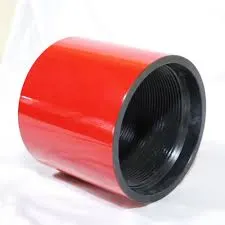- Afrikaans
- Albanian
- Amharic
- Arabic
- Armenian
- Azerbaijani
- Basque
- Belarusian
- Bengali
- Bosnian
- Bulgarian
- Catalan
- Cebuano
- Corsican
- Croatian
- Czech
- Danish
- Dutch
- English
- Esperanto
- Estonian
- Finnish
- French
- Frisian
- Galician
- Georgian
- German
- Greek
- Gujarati
- Haitian Creole
- hausa
- hawaiian
- Hebrew
- Hindi
- Miao
- Hungarian
- Icelandic
- igbo
- Indonesian
- irish
- Italian
- Japanese
- Javanese
- Kannada
- kazakh
- Khmer
- Rwandese
- Korean
- Kurdish
- Kyrgyz
- Lao
- Latin
- Latvian
- Lithuanian
- Luxembourgish
- Macedonian
- Malgashi
- Malay
- Malayalam
- Maltese
- Maori
- Marathi
- Mongolian
- Myanmar
- Nepali
- Norwegian
- Norwegian
- Occitan
- Pashto
- Persian
- Polish
- Portuguese
- Punjabi
- Romanian
- Russian
- Samoan
- Scottish Gaelic
- Serbian
- Sesotho
- Shona
- Sindhi
- Sinhala
- Slovak
- Slovenian
- Somali
- Spanish
- Sundanese
- Swahili
- Swedish
- Tagalog
- Tajik
- Tamil
- Tatar
- Telugu
- Thai
- Turkish
- Turkmen
- Ukrainian
- Urdu
- Uighur
- Uzbek
- Vietnamese
- Welsh
- Bantu
- Yiddish
- Yoruba
- Zulu
vacuum hose coupling
Understanding Vacuum Hose Couplings An Essential Component in Automotive and Industrial Applications
Vacuum hose couplings play a vital role in various automotive and industrial applications, facilitating the connection between vacuum hoses and other components. These couplings ensure that a vacuum system operates efficiently, maintaining the necessary pressure levels while minimizing leaks. In this article, we will delve into the details surrounding vacuum hose couplings, including their types, applications, installation considerations, and maintenance.
What is a Vacuum Hose Coupling?
A vacuum hose coupling is a fitting that connects two vacuum hoses or a vacuum hose to a vacuum component, such as a pump or a valve. These couplings are engineered to create a tight seal, preventing air leaks that could compromise the vacuum system's performance. Couplings can be made from various materials, including rubber, plastic, and metal, depending on the application's requirements and the environment the vacuum system operates in.
Types of Vacuum Hose Couplings
1. Barbed Couplings These are common in automotive applications, featuring small, raised ridges (barbs) that grip the inner wall of the hose. Barbed couplings are typically used with soft hoses and are secured using hose clamps to prevent disconnection.
2. Threaded Couplings Threaded couplings utilize male and female threads to create a tight connection. These are often used in higher-pressure applications, providing a more secure and leak-proof connection. The threaded nature also allows for easy disassembly when needed.
3. Quick Disconnect Couplings Ideal for applications requiring frequent disconnections, quick disconnect couplings enable users to connect and disconnect vacuum hoses easily without the use of tools. These couplings come with a mechanism that locks the hoses in place until the release button is pressed.
4. Flanged Couplings Flanged couplings consist of two flat surfaces that are bolted together, providing a robust connection suitable for larger hoses and high-pressure systems. They are commonly found in industrial settings.
Applications of Vacuum Hose Couplings
Vacuum hose couplings are utilized in a wide range of applications, including
- Automotive Systems In vehicles, vacuum systems control various components such as brakes, emissions controls, and engine controls. Reliable couplings ensure the vacuum system functions correctly, contributing to vehicle efficiency and safety.
- Industrial Equipment Many industrial processes rely on vacuum systems for material handling, packaging, and processing. Proper couplings maintain the vacuum integrity necessary for optimal operation.
vacuum hose coupling

- Laboratory Equipment In scientific settings, vacuum systems are crucial for creating controlled environments
. Couplings ensure that experiments are not compromised by air leaks.Installation Considerations
When installing vacuum hose couplings, consider the following
- Compatibility Ensure that the coupling type and size are compatible with both the vacuum hose and the component it connects to. Mismatched sizes can lead to poor sealing and potential system failure.
- Material Selection Choose the right materials to withstand the operating conditions, including temperature, pressure, and exposure to chemicals.
- Secure Fitting When using barbed couplings, always use a hose clamp to secure the connection. For threaded and flanged couplings, ensure that the threads are clean and in good condition to facilitate proper torque and seal.
Maintenance Tips
To ensure the longevity and efficacy of vacuum hose couplings, regular maintenance is essential. Here are some tips
- Inspect Regularly Periodically check for signs of wear, cracks, or leaks around the couplings.
- Cleanliness Keeping the area around the connections clean will prevent contaminants from entering the vacuum system.
- Re-tighten Connections After initial installation, it’s a good idea to check and re-tighten connections after a short period of use.
Conclusion
Vacuum hose couplings are crucial components in ensuring the efficiency and reliability of vacuum systems across various applications. Understanding their types, applications, and maintenance can help users optimize performance and prolong the lifespan of their systems. Whether in the automotive industry or in a laboratory setting, choosing the right vacuum hose coupling and installing it correctly is essential for maintaining vacuum integrity and operational efficiency.
-
Tubing Pup Joints: Essential Components for Oil and Gas OperationsNewsJul.10,2025
-
Pup Joints: Essential Components for Reliable Drilling OperationsNewsJul.10,2025
-
Pipe Couplings: Connecting Your World EfficientlyNewsJul.10,2025
-
Mastering Oilfield Operations with Quality Tubing and CasingNewsJul.10,2025
-
High-Quality Casing Couplings for Every NeedNewsJul.10,2025
-
Boost Your Drilling Efficiency with Premium Crossover Tools & Seating NipplesNewsJul.10,2025







